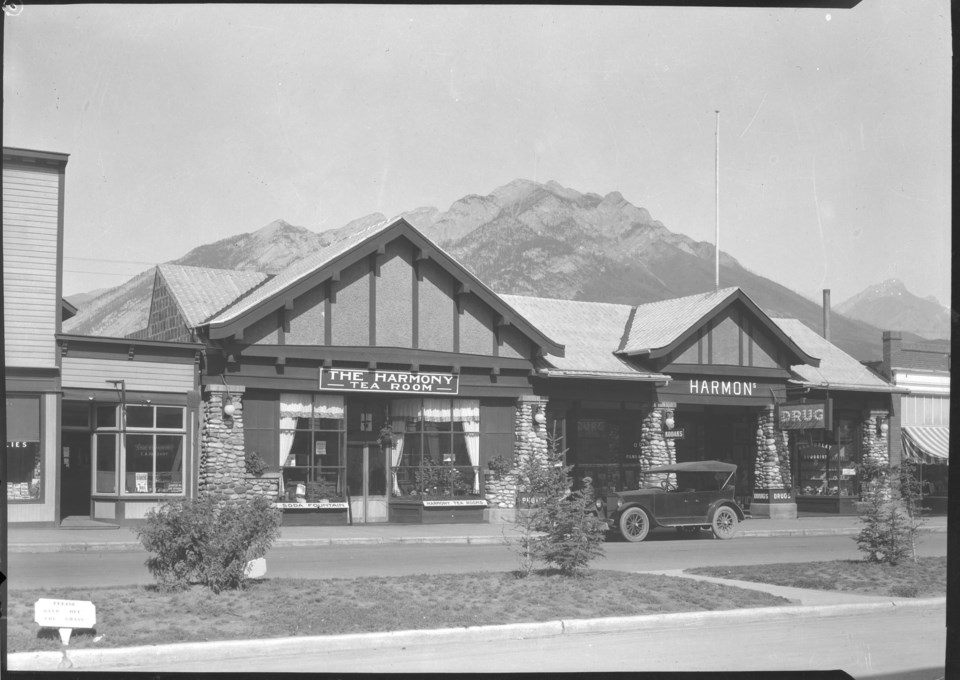Byron Harmon’s name may not be familiar to you, but you would most likely recognize the iconic black-and-white images he captured during his time as the official photographer to The Alpine Club of Canada in the early 1900s.
In 2020, a group of young entrepreneurs including the great-grandson of Byron Harmon opened The Radiant restaurant and cabaret in the building that originally housed Byron’s photography studio on Banff Avenue.
First constructed in 1912 and then rebuilt after a fire in 1917, the Harmon’s building is a beautifully restored example of commercial architecture in Banff from the early 20th century. The Banff Avenue façade blends rustic river rock pillars with Tudor half-timbering borrowed from medieval English rural cottages.
This rustic architecture conveys a desire to reconnect with a more idyllic, natural way of life — a sentiment that visitors and residents attracted to the Bow Valley will likely still identify with today.
Maintaining the period theme of the original façade, The Radiant features two distinct new Art Deco–styled spaces. On Banff Avenue, a bright parlour with large windows, tall ceilings and geometric tiles recalls the initial Harmony Tea Room, which occupied the space in the 1920s. In the back, an intimate speakeasy evokes the feeling of Jazz Age prohibition with a ritzy bar, a small stage and luxurious velvet and leather dining booths. Throughout the venue are gorgeous decorative wall patterns, geometric tiles and a collection of period-inspired lamps and furniture.
The owner’s vision for the space is to provide a unique and inclusive venue for the arts and culture in Banff. The Radiant hosts a regular slate of live music and cabaret performances, and the kitchen has ranked among the best new restaurants in Calgary.
Although the Tudor and Art Deco styles incorporated in the Harmon’s building overlapped during the 1920s, they originated from substantially different social currents. Whereas the façade speaks of a desire to reconnect with nature, the new interior optimistically embraces luxury, glamour and faith in social progress.
Byron saw the Rustic Tudor style as the only suitable way to build in the wilderness setting of Banff National Park. Indeed, this style was later adopted as a theme for all of the park’s official buildings.
Others have visualized it differently. The Banff region is home to countless interpretations of what mountain architecture can be. Frank Lloyd Wright’s picnic pavilion built at the Banff Recreation Grounds in 1914 employed the bold horizontal lines of his Prairie School of architecture, to initial mixed reviews. At about the same time, the CPR rebuilt the Banff Springs Hotel, modifying its popular French castle architecture with more-rustic Scottish Baronial details to reflect the rugged beauty of the surrounding mountains.
Banff’s diverse architectural heritage reveals the different values and priorities of those who have sought to make a life here. With a nod to the history of the Harmon’s building, and a fresh vision for its future, The Radiant is writing its own chapter in Banff’s cultural history.
Florian Jungen (he/his) is an independent architect based in Canmore. He serves on the Canmore Planning Commission and the Canmore Heritage Advisory Committee.




